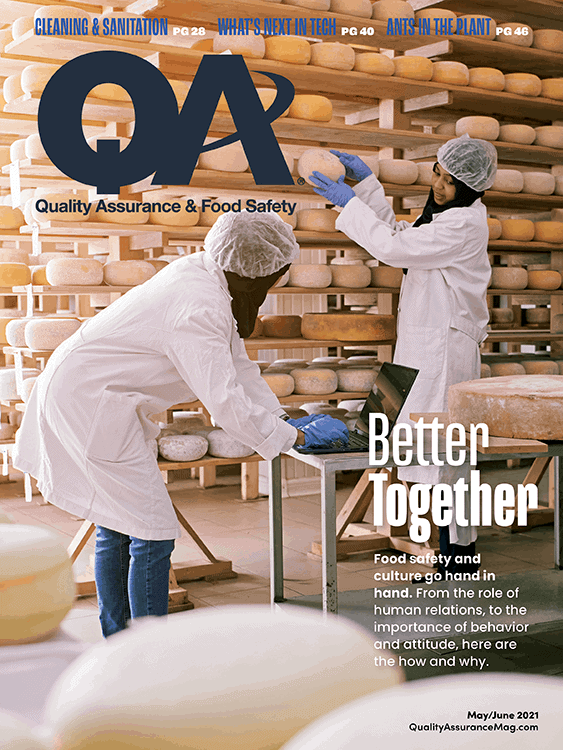Food safety culture isn’t one-size-fits-all.
“Making it a reality means that throughout the organization, food safety has been defined for each member and department in terms and expectations that are both relevant and clear to them,” said Erica Sheward, director Global Food Safety Initiative (GFSI).
For example, what’s required of the purchasing department is different from that of the maintenance team. A mature food safety culture is one in which the company vision and mission have been broken down into the finer details of expectations for every department.
While each food company will need to find their own ways to implement food safety culture, here are some starting points.
Make it part of the mission.
While the practical processes and implementations are handled by a company’s food safety team, the idea of food safety doesn’t have to rest on their shoulders alone. “While food safety doesn’t need to be mentioned in the vision and mission statements themselves, its importance should be reflected in all of the company’s communications including its website and corporate annual reports,” said Marie-Claude Quentin, senior technical manager at GFSI. “It should also be key to internal communications which should occur regularly, be tailored to the organization’s various audiences and should be measured for effectiveness.” Some ways to do this might include posters, meetings, briefings or even competitions, awards and recognition.
Benchmark it.
By harmonizing and benchmarking processes, producers can embed food safety culture throughout their organizations by ensuring trust and transparency for consumers and supply chain partners. “[This way, you] set mutual expectations for everyone involved in the delivery of food both within the organization and for an organization’s partners,” said Sheward.
Make food safety training a continually evolving process.
Whereas food safety training can often be seen as a one-off situation, it needs to be considered a lifelong process which should be embedded in people’s careers and roles as the world constantly changes. “A company that devotes time and attention regularly to food safety information, education and accountability helps sustain a food safety culture,” said Quentin.
Let food safety culture guide your responses to change.
In any enterprise with a strong food safety culture, its adaptability is reflected in its skill in anticipating, preparing for and responding to change and unexpected disruptions to survive and prosper. “One of the ways in which organizations can prepare for change is by ensuring that food safety vision and mission statements are being applied to decisions at all levels, by all employees and especially in crisis decisions,” said Quentin.
Make food safety information easily accessible for everyone in the company.
As a company, it is important to keep current on the latest industry intelligence including market incidents, changes to food safety legislation, significant new technology and analytical advances, and then share that with every employee. “This will broaden awareness and understanding of potential risks and hazards,” said Quentin.
Don’t go it alone.
Collaboration both within an organization and across the industry is key to advancing understanding of food safety culture. “Work with your peers to share insight and knowledge, which enables the industry to continually raise the bar and enable the industry to safely build trust with consumers and partners,” said Sheward.

Explore the May June 2021 Issue
Check out more from this issue and find your next story to read.
Latest from Quality Assurance & Food Safety
- Scentian Bio Wins Top Prize at IFT FIRST Startup Pitch Competition
- Evigence Debuts FreshSense to Change How Food Industry Measures Freshness
- Acme Releases Automated Scraper Strainer
- Mitzi Baum to Step Down as CEO of Stop Foodborne Illness
- USDA ARS Scientists Develop Pectin That Gels with Low-Sugar Products
- GS1 US Celebrates 50-Year Barcode 'Scanniversary' and Heralds Next-Generation Barcode to Support Modern Commerce
- New Florida Extension Agent Will Teach Stakeholders About Food Safety
- Athletic Brewing Company Announces $50 Million Equity Financing Round Led by General Atlantic





